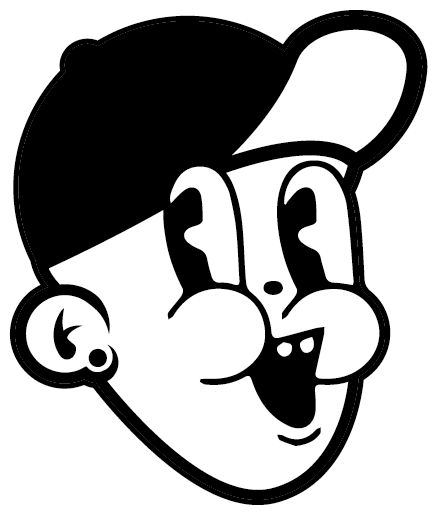
Introduction
This article is a comprehensive guide on what it takes to become a successful digital product designer. It covers the responsibilities, qualifications, tools, and skills necessary for this role. Whether you’re interested in becoming a digital product designer or looking to hire one, this guide will provide you with valuable insights into this exciting field.
What is a Digital Product Designer?
A digital product designer is a professional who is responsible for designing and developing digital products, such as web and mobile apps. They work closely with cross-functional teams, which include product managers, engineers, and developers, to create and refine digital products that meet the needs of their target audience.
The responsibility of a digital product designer goes beyond creating aesthetically pleasing designs. One of their primary responsibilities is to ensure that their designs are user-friendly and deliver an excellent user experience. They achieve this by conducting user research, creating user personas, and designing intuitive interfaces that are easy to navigate. They must be able to empathize with users and understand the problems they face when using digital products so they can provide solutions that make their lives easier.
To be a successful digital product designer, one must not only have a solid understanding of design principles such as typography, color theory, and composition but must have excellent creative thinking skills, an ability to empathize and understand the end user as well as know what it takes to achieve business objectives. A good Product Designer will wear many hats and take on any challenge. They should also be proficient in design software such as Sketch, Figma, or Adobe Creative Suite. This expertise allows them to create designs that meet the required standards and are compatible with the development team’s needs.
A successful digital product designer must be passionate about solving complex problems and be highly collaborative. They need to have excellent communication skills to interact effectively with their team members, stakeholders, and customers. They must also be able to adapt to changing project requirements and be comfortable working in a fast-paced, dynamic environment.
What tools do Digital Product Designers use?
Digital product designers use a variety of tools to design and prototype digital products. Some of the most commonly used tools include:
- Design software: Design software such as Sketch, Figma, Adobe Creative Suite, and InVision are used to create wireframes, prototypes, and high-fidelity designs. Why not try Figma for free: Visit Figma
- Collaboration tools: Digital product designers need to work closely with cross-functional teams. Collaboration tools such as Slack, Trello, Jira and Asana help them to communicate effectively with their team members.
- User research tools: To design user-friendly digital products, digital product designers need to conduct user research. User research tools such as UserTesting, Optimal Workshop, and Hotjar are used to gather feedback from users.
- Analytics tools: Analytics tools such as Google Analytics and Mixpanel are used to track user behavior and measure the success of digital products.
- Development tools: Digital product designers work closely with developers to ensure that their designs can be implemented. Development tools such as GitHub, Bitbucket, and Jira are used to manage the development process and track issues.
Where does a Digital Product Designer fit inside an organization
Digital product designers are an essential part of a company’s product development process. They typically work within a cross-functional team that includes product managers, engineers, and developers. Their role is to design and develop digital products, such as web and mobile apps, that meet the needs of their target audience.
To achieve this goal, digital product designers must work closely with their team members to ensure that their designs are user-friendly, visually appealing, and deliver an excellent user experience. They must be able to empathize with users and understand the problems they face when using digital products so they can provide solutions that make their lives easier.
Digital product designers must also have excellent communication skills to interact effectively with their team members, stakeholders, and customers. They must be able to present their ideas clearly and effectively and be open to feedback from others.
In terms of organizational structure, digital product designers may sit within a variety of teams, depending on the company. In some organizations, they may be part of the marketing or design team, while in others, they may be part of a dedicated product team. Regardless of the team structure, digital product designers are crucial members of cross-functional teams that create digital products.
What does it take to be a successful product designer
To be a successful product designer, it takes a combination of technical skills, soft skills, and a passion for solving complex problems while delivering an exceptional user experience.
Technical skills are fundamental and include a strong understanding of design principles such as typography, color theory, and composition. Excellent proficiency in design software such as Sketch, Figma, or Adobe Creative Suite is also essential. Furthermore, knowledge of user research and testing methodologies is essential.
Soft skills are equally important. Product designers need to be excellent communicators, collaborators, and empathetic to users’ needs. Effective communication skills allow them to present and articulate their design ideas clearly to the stakeholders, team members and customers. Collaboration skills enable product designers to work effectively with cross-functional teams, including product managers, engineers, and developers, to develop products. Empathy is vital as it allows designers to understand the problems that users face when using digital products, allowing them to provide solutions that make their lives easier.
Successful product designers are passionate about solving complex problems and delivering an excellent user experience. They are highly motivated and enthusiastic about their work. They have a deep understanding of the product development process and the role of design in it. They are always learning and staying up to date on the latest design trends, best practices, and tools.
In addition, product designers must be adaptable and able to work in a fast-paced, dynamic environment. They must be comfortable working in an iterative process where feedback is received continuously and be open to feedback from others. They need to be able to take constructive criticism and use it to improve their designs.
How a Digital Product Designer can help a company succeed
Digital product designers can play a significant role in the success of a company. By creating user-friendly digital products that deliver an exceptional user experience, they can help companies achieve their business goals. One of the key ways they do this is by conducting user research, creating user personas, and designing intuitive interfaces that are easy to navigate.
User research involves gathering feedback from users to understand their needs, preferences, and pain points when using digital products. This information is essential in designing products that meet the needs of the target audience. Creating user personas involves creating fictional characters that represent different types of users. These personas help designers to understand the different needs, goals, and behaviors of their target audience. With this understanding, designers can create products that address the specific needs of each persona.
Designing intuitive interfaces is also a crucial part of a digital product designer’s job. They must design interfaces that are easy to navigate, intuitive, and visually appealing. This requires a deep understanding of design principles such as typography, color theory, and composition, as well as proficiency in design software such as Sketch, Figma, or Adobe Creative Suite.
By empathizing with users and understanding the problems they face when using digital products, digital product designers can provide solutions that make their lives easier. This, in turn, can lead to increased customer satisfaction, improved brand loyalty, and increased revenue for the company. A user-friendly digital product can set a company apart from its competitors and help it establish a strong brand reputation.
How do I become a Digital Product Designer?
To become a digital product designer, you will need to have a combination of technical skills, soft skills, and a passion for solving complex problems while delivering an exceptional user experience.
Some of the technical skills required include a strong understanding of design principles such as typography, color theory, and composition. Proficiency in design software such as Sketch, Figma, or Adobe Creative Suite is also essential. Knowledge of user research and testing methodologies is also important.
Soft skills are equally important. Product designers need to be excellent communicators, collaborators, and empathetic to users’ needs. Effective communication skills allow them to present and articulate their design ideas clearly to the stakeholders, team members and customers. Collaboration skills enable product designers to work effectively with cross-functional teams, including product managers, engineers, and developers, to develop products. Empathy is vital as it allows designers to understand the problems that users face when using digital products, allowing them to provide solutions that make their lives easier.
To become a digital product designer, you can start by building a strong foundation in design principles and software. There are many resources available online, such as design blogs, tutorials, and online courses, that can help you develop these skills. You can also consider pursuing a degree or certificate in design or a related field.
In addition, gaining experience through internships or freelance work can help you build a portfolio of work and develop your skills. Networking with other designers and attending industry events can also provide valuable opportunities to learn and grow as a designer.
Summary
This article is a comprehensive guide on what it takes to become a successful digital product designer. It covers the responsibilities, qualifications, tools, and skills necessary for this role. Digital product designers are responsible for designing and developing digital products, such as web and mobile apps, that meet the needs of their target audience. They must have a solid understanding of design principles, be proficient in design software, and have excellent communication skills. They must also be able to adapt to changing project requirements and work in a fast-paced environment. By creating user-friendly digital products that deliver an exceptional user experience, digital product designers can help companies achieve their business goals.
You can try Figma today for free here
